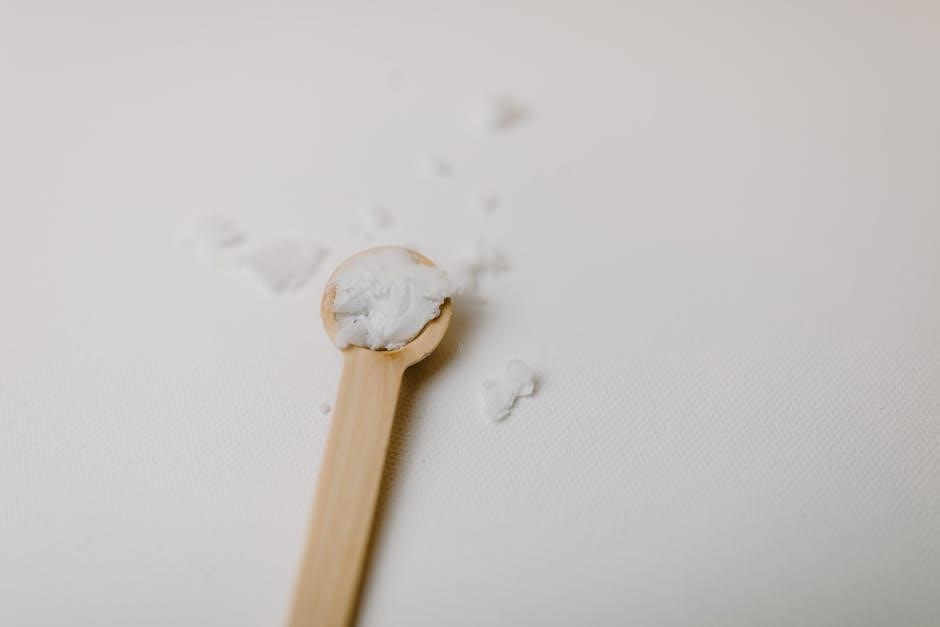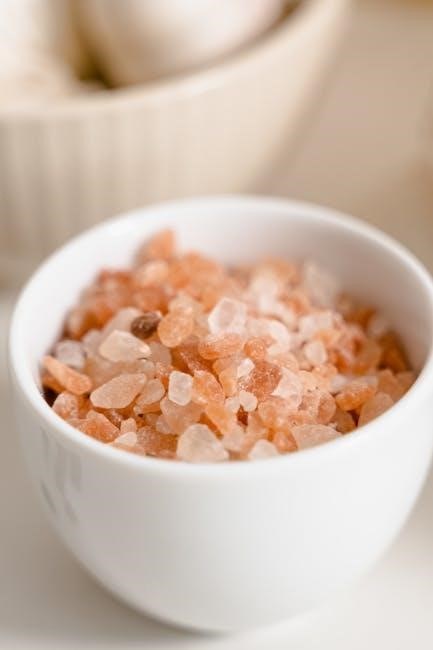Welcome to the Pure Chlor Salt System Manual․ This guide provides comprehensive instructions for understanding, installing, and maintaining your system․ It covers operation, maintenance, and troubleshooting to ensure optimal performance and longevity․ Follow these guidelines carefully to maximize efficiency and safety․
1․1 Overview of the Pure Chlor Salt System
The Pure Chlor Salt System is a cutting-edge, eco-friendly solution for pool sanitation, converting salt into chlorine naturally․ It operates on a renewable cycle, reducing the need for manual chlorine addition while maintaining clean, safe water․ The system is designed for efficiency, with an ideal salt concentration range of 3500 to 5000 ppm for optimal performance․ It automatically generates chlorine, eliminating the need for harsh chemicals․ This system is user-friendly, with features like continuous operation and minimal maintenance․ By maintaining the recommended salt levels, you ensure consistent sanitation and prevent corrosion of pool fixtures․ Regular cleaning of the salt cell every 3-6 months is essential for longevity and performance․
1․2 Importance of Following the Manual
Adhering to the Pure Chlor Salt System Manual is crucial for ensuring safe and efficient operation․ Proper installation, maintenance, and troubleshooting procedures prevent system damage and maintain optimal performance․ Salt levels must be carefully monitored, with a recommended range of 3500-5000 ppm to avoid corrosion and ensure consistent chlorine production․ Regular tasks like cleaning the salt cell every 3-6 months are essential for longevity; Failure to follow guidelines can lead to reduced efficiency, increased maintenance costs, or even system failure․ By following the manual, users can maximize the system’s benefits, extend its lifespan, and enjoy a clean, safe pool environment year-round․

Installation of the Pure Chlor Salt System
Read the manual thoroughly before starting․ Ensure all electrical connections are secure and meet local codes․ The system requires a salt concentration of 3500 ppm for optimal function․ Add salt evenly around the pool, avoiding the skimmer to prevent damage․ Follow the step-by-step installation guide carefully․ If unsure, consult a professional for assistance․
2․1 Pre-Installation Requirements
Before installing the Pure Chlor Salt System, ensure your pool water meets the required salt concentration of 3500-5000 ppm․ Use only granulated sodium chloride (pool salt) without additives like iodized or anti-caking agents․ Avoid using rock salt or calcium chloride, as they can damage the system․ Brush the pool floor to dissolve salt evenly․ Ensure the circulating pump is on during salt addition to prevent clogging․ Do not add salt through the skimmer, as this may damage the filter or control box․ Proper preparation ensures smooth installation and optimal system performance․ Follow these steps carefully to avoid potential issues during operation․
2․2 Step-by-Step Installation Process
Install the Pure Chlor Salt System near your pool equipment for easy access․ Connect the plumbing according to the manufacturer’s diagram, ensuring all pipes are securely fitted․ Next, connect the electrical components, following the wiring instructions carefully․ Mount the control box in a dry, shaded area to protect it from direct sunlight and moisture․ Once installed, test the system by running it through a cycle to ensure proper function․ Double-check all connections for leaks or loose fittings․ Finally, ensure the system is grounded and all safety precautions are in place․ Proper installation is crucial for efficient and safe operation․

Operation of the Pure Chlor Salt System
The Pure Chlor Salt System operates by converting salt into chlorine for sanitization․ Use the control panel to monitor and adjust settings for optimal performance․ Regular maintenance ensures efficient operation and longevity of the system․
3․1 Understanding the Control Panel
The control panel is the central interface for managing the Pure Chlor Salt System․ It displays essential information such as salt levels, chlorine production, and system status․ Use the panel to adjust settings like chlorine output and monitor error lights․ The display shows current salt concentration, ensuring it stays within the ideal range of 3500-5000 ppm․ Familiarize yourself with buttons or touchscreens to navigate menus, access diagnostic tools, and activate features like super chlorination․ Regularly check the panel to identify issues early, such as low salt warnings or system malfunctions․ Proper use of the control panel ensures efficient operation and maintains your pool’s cleanliness and safety․
3․2 Daily Operation and Monitoring
Ensure the Pure Chlor Salt System operates efficiently by performing daily checks․ Monitor salt levels, keeping them between 3500-5000 ppm for optimal performance․ Use test strips to verify chlorine levels and adjust as needed․ Brush the pool floor regularly to dissolve salt evenly․ Check the control panel for error lights or low salt warnings․ Keep the pump running continuously to maintain circulation․ Test water chemistry weekly, adjusting pH and alkalinity as required․ Regularly clean the salt cell every 3-6 months to prevent mineral buildup․ Address any issues promptly to maintain system efficiency and pool safety․ Proper daily monitoring ensures consistent chlorine production and a clean swimming environment․
Maintenance of the Pure Chlor Salt System
Regular maintenance ensures optimal performance and longevity․ Clean the salt cell every 3-6 months, monitor salt levels, and address any issues promptly to maintain efficiency and safety․
4․1 Cleaning the Salt Cell
Cleaning the salt cell is essential for maintaining optimal performance․ Mix 1 part muriatic acid with 4 parts water in a safe container․ Submerge the cell, ensuring all surfaces are covered․ Let it soak for 5-10 minutes until foaming stops․ Repeat if heavy buildup exists․ After cleaning, rinse thoroughly with fresh water․ Regular cleaning prevents calcium deposits and ensures efficient chlorine production․ Always wear protective gear when handling acid․ Cleaning every 3-6 months extends the cell’s lifespan and maintains system efficiency․ Follow safety precautions and manual guidelines for best results;
4․2 Regular Maintenance Tasks
Regular maintenance ensures the Pure Chlor Salt System operates efficiently․ Check salt levels monthly, ensuring they remain between 3500-5000 ppm․ Clean the filter regularly to prevent blockages and maintain proper water flow․ Monitor chlorine production and adjust settings as needed․ Inspect the salt cell for calcium buildup and clean it every 3-6 months․ Check for corrosion on metallic components, especially at high salt levels․ Test water chemistry weekly to balance pH and alkalinity․ Replace worn-out parts promptly․ Keep the control panel clean and free from debris․ Follow the manual’s guidelines for routine checks to prevent system issues and extend its lifespan․ Regular upkeep ensures consistent performance and safety․

Troubleshooting the Pure Chlor Salt System
This section helps identify and resolve common issues, such as low salt levels, error lights, and cell buildup, ensuring optimal system performance and longevity․
5․1 Common Issues and Solutions
Common issues with the Pure Chlor Salt System include low salt levels, error lights, and cell buildup․
– Low Salt Levels: If the salt level is critically low, the system may flash a warning․ Check and adjust salt to 3500-4500 ppm for optimal performance․
– Error Lights: Refer to the manual for specific error light meanings․ For example, a flashing low salt light indicates the need to add salt or clean the cell․
– Cell Buildup: Clean the cell regularly by soaking it in a mixture of muriatic acid and water until foaming stops․ Repeat if necessary․
– Chlorine Production Issues: Ensure proper salt levels and clean the cell thoroughly․ If problems persist, consult the troubleshooting guide or contact technical support․
Regular maintenance and adherence to guidelines can prevent most issues and ensure smooth operation․
5․2 Error Lights and Their Meanings
The Pure Chlor Salt System uses error lights to indicate specific issues․
– A flashing low salt light signals critically low salt levels (below 3000 ppm)․ Add salt to maintain the recommended range of 3500-4500 ppm․
– Continuous error lights may indicate cell issues, such as calcium buildup․ Clean the cell with a muriatic acid solution to resolve this․
– Other error lights may point to system malfunctions or sensor problems․ Refer to the manual for specific light codes and solutions․
Always address error lights promptly to prevent system damage and ensure proper chlorine production․ Regular maintenance can help minimize errors and keep your system running smoothly․
Salt Requirements and Management
The Pure Chlor Salt System requires a salt concentration of 3500-5000 ppm for optimal performance․ Exceeding 8000 ppm can cause corrosion in metallic components․ Monitor levels regularly․
6․1 Ideal Salt Levels for Optimal Performance
The Pure Chlor Salt System operates most efficiently with salt levels maintained between 3500 and 5000 ppm․ This range ensures consistent chlorine production and system longevity․ Salt levels below 3500 ppm may reduce chlorine output, while levels exceeding 5000 ppm can lead to potential corrosion of metallic components․ To achieve optimal performance, use high-quality granulated pool salt (sodium chloride) only․ Avoid using iodized salt, rock salt, or water softener salt, as these can damage the system․ Regularly test and adjust salt levels to stay within the recommended range․ Proper salt management is crucial for maintaining water quality and extending the lifespan of your Pure Chlor Salt System․
6․2 Effects of High or Low Salt Levels
Maintaining proper salt levels is crucial for the Pure Chlor Salt System․ Low salt levels (below 3500 ppm) can reduce chlorine production and trigger low-salt alerts․ Prolonged low levels may damage the system․ Conversely, high salt levels (above 5000 ppm) can cause corrosion of metallic pool components, such as ladders and handrails․ Excessive salt may also lead to inefficient chlorine generation․ To prevent these issues, monitor salt levels regularly using test strips or a digital tester․ Adjust salt levels as needed to stay within the optimal range of 3500–5000 ppm․ This ensures consistent performance, protects equipment, and maintains water quality for a safe and enjoyable swimming experience․

Resources and Support
For further assistance, refer to the comprehensive guides and manuals available online․ Contact technical support at 305-395-8333 or email thepoolsupplywarehouse@gmail․com for expert help and troubleshooting․
7․1 Available Guides and Manuals
A variety of resources, including detailed guides and manuals, are available to support your Pure Chlor Salt System․ These materials provide step-by-step instructions for installation, operation, and maintenance․ Troubleshooting guides and technical manuals can help resolve common issues quickly․ Additionally, comprehensive operation manuals and user guides are accessible online, offering in-depth information to ensure optimal system performance․ Videos, tutorials, and FAQs are also available to assist with specific tasks․ These resources are designed to empower homeowners and technicians with the knowledge needed to maintain and troubleshoot the system effectively․ Visit the official website or contact support for access to these valuable tools․
7․2 Contact Information for Technical Support
For any questions or assistance with your Pure Chlor Salt System, contact our technical support team at 305-395-8333 or email thepoolsupplywarehouse@gmail․com․ Our state-of-the-art repair center is located at 17001 Alico Commerce Court, Fort Myers, FL 33967․ Whether you need troubleshooting, maintenance guidance, or general inquiries, we are here to help․ Follow us on Facebook, Twitter, Instagram, or Pinterest for updates and tips․ Our team is dedicated to ensuring your pool and spa needs are met, even if you didn’t purchase from us․ Feel free to reach out for expert advice and support․
